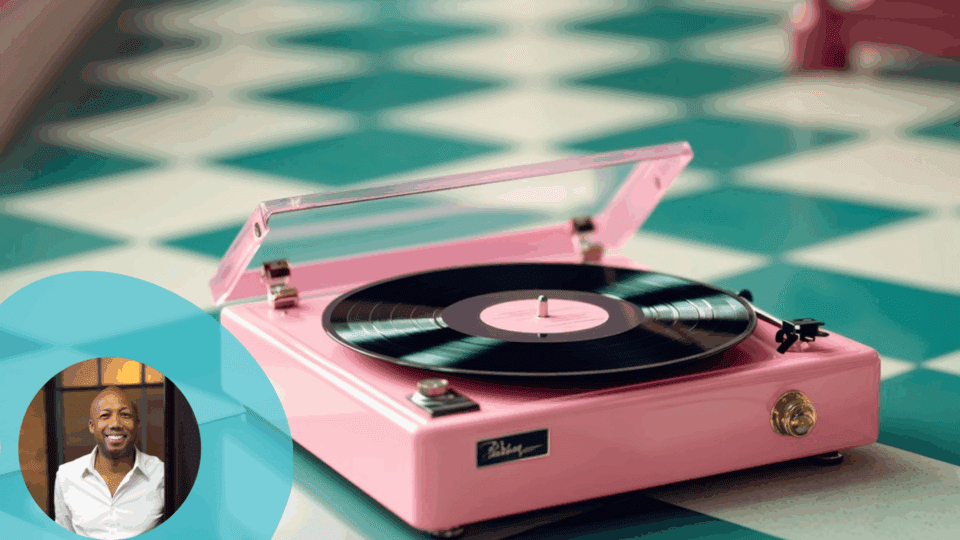Feel a sense of déjà vu?
You’re not alone. These days, culture seems to be in a constant state of rewind. Nostalgia is everywhere – HMV and Toys ‘R’ Us are back, flip phones and vintage are cool again, and childhood memories are selling fast.
In a world shaped by economic anxiety, digital fatigue and political drift, the pull of the past – or at least the comfort of it – is easy to understand. Platforms like TikTok have only quickened the pace, turning VHS filters, 90s TV clips and lo-fi aesthetics into algorithmic gold. From primary schoolers in retro sitcom merch to Gen Z resurrecting early 2000s fashion, it’s clear the past is no longer behind us.
And of all industries, few are better placed to engage with that than retail – because few are as emotionally charged, or as deeply rooted in memory.
Why Retail?
Nostalgia lands when it carries emotional weight. Without it, you’re just dealing in retro aesthetics.
Retail brands are often part of life’s most resonant moments – the back-to-school shop, weekends spent hanging in town centres, the first jacket you bought with your own money. These experiences leave a mark, and they offer retail brands legitimacy in the nostalgia space.
Many also have long histories to draw on – rich archives, well-worn rituals, distinctive assets. The opportunity lies in finding the brand truths that still ring true and finding fresh ways to express them. The most effective creative lies in this outside-the-box thinking.
John Lewis offered a nice example of this with its Christmas ad last year. Told through a shop window display across decades of British life, it reminded us of the brand’s steady presence through changing times – always underpinned by its Never Knowingly Undersold promise. It didn’t posture; it simply resonated. The nostalgia felt earned.
But you don’t need a century-old archive to engage with the past meaningfully. Newer brands, online retailers and those reaching into unfamiliar audiences have other ways in.
Borrow, Remix, Reimagine
Collaboration offers one route. Retailers can borrow cultural equity from elsewhere – heritage brands, nostalgic franchises, retro aesthetics – and remix it into something new. Boohoo’s Bratz collection channelled early 2000s doll culture for a Gen Z audience fluent in throwback references, for example.
Other brands can lean into shared rituals rather than specific memories. Most nostalgic moments are shaped by experiences, not logos – so any retailer can evoke the magic of childhood Christmas shopping or buying your prom dress.
And beneath it all, nostalgia is often driven by something deeper – a longing for innocence, simplicity or a sense of belonging. Brands that truly understand their audience can tap into those emotions, even without an obvious reference to the past.
Getting it Right for your Brand
The best nostalgia-led work sits in the tension between past and present – reinterpreting, not replicating.
Achieving that requires insight. The strongest nostalgia-led work isn’t trend-driven. It’s rooted in culture, audience and brand. It recognises which parts of the past are being reappraised and why – whether people are seeking comfort, identity, belonging or escape.
Social media offers crucial clues. It reveals not only what people are nostalgic for, but how they express it. Are they watching old sitcoms, or remixing them into short clips? Are they re-enacting moments, or simply borrowing the look? Miss the behaviour and you miss the point.
Brands also need to understand where they belong. Not every reference is yours to claim. Be clear about your role: are you reviving a moment, reframing it or bringing two eras into dialogue?
Once you’ve found the idea, make it feel new. Whether through execution, platform or tone, nostalgia needs to be made relevant for today’s audience. Don’t just say “remember this?” without adding value – the past alone can’t carry the emotional weight.
It has to be a distinctive idea that stands the test of time (much like the memory it’s trying to re-create).
And make it open. The most resonant nostalgic work expands the circle – taking what was once niche and letting more people in.
Finally, invest in the craft. Nostalgia is personal – and when you’re evoking something treasured, the bar is higher. The best examples elevate what came before, pass the test for longtime fans and earn the attention of a new audience.
The Future of Looking Back
One of the curious things about nostalgia is how much it shifts over time.
Already, timelines are collapsing – people are just as nostalgic for 2020 as for 1980. Thanks to social media, even the smallest cultural fragments can be revived and reshared, paving the way for callbacks that are more niche, more subversive, less polished. Sometimes, a half-forgotten snack or storyline hits harder than a cultural icon, precisely because it feels personal.
But one thing doesn’t change. Nostalgia has never really been about the past – it’s about emotional clarity in a noisy, uncertain world.
For retail brands, that makes the opportunity simple: meet people where they used to be, so you can mean more to them now.
Conrad Persons is an entrepreneur and current CEO of Grey London. He began to lead this award-winning agency in autumn 2023. Prior to this he served as Global Strategist, WPP where he collaborated with brands as varied as Amazon to Colgate – with a focus on advising senior clients on growth strategy and innovation. He is the Co-founder and former CEO of Mash, a boutique consultancy that invented products, services and digital experiences for some of the world’s biggest businesses (e.g., Samsung, PepsiCo) as well as new and mature early-stage businesses (Wise, Lyst, Uber). Mash was acquired by WPP in 2018, whereby Persons joined a senior team working with WPP’s most valued clients. He has worked in New York, London and Tokyo in fields ranging from trendhunting to planning and data. He has written for the Guardian, blogged for the New York Times, been featured in Fortune, and published fiction in America.




